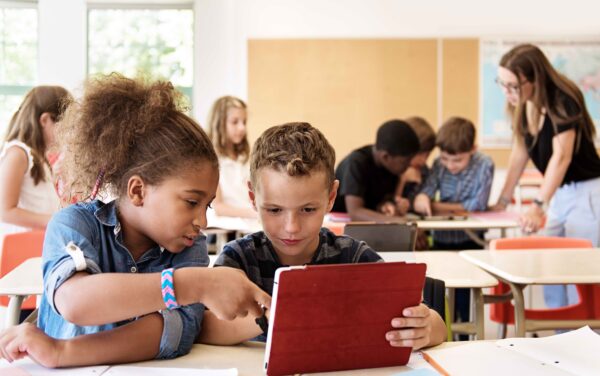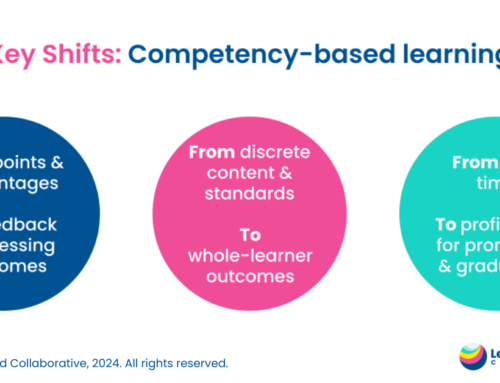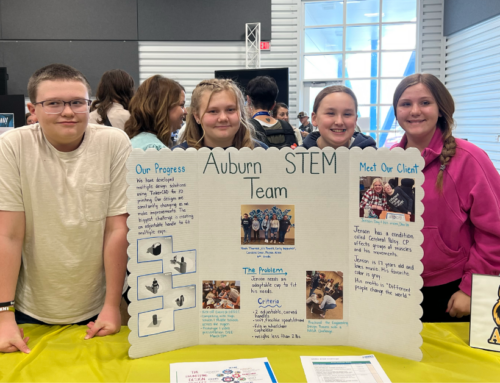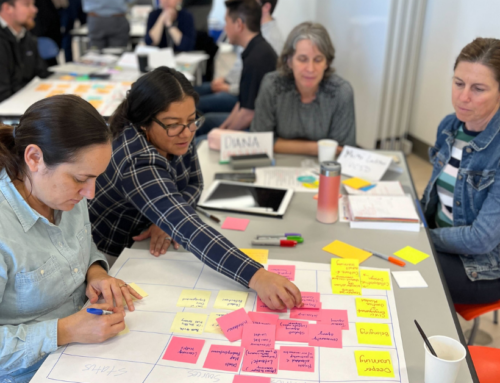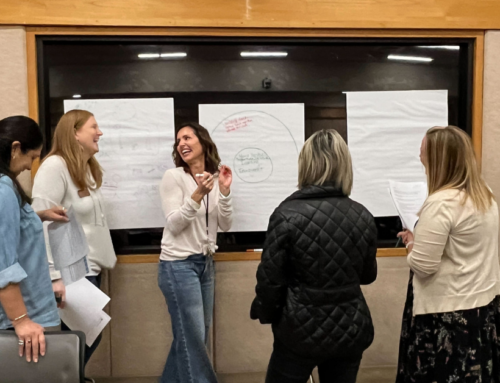What is a digital ecosystem and what does it look like to create a digital ecosystem for your learners? Those two questions were frequently asked at the sessions I attended at this year’s ISTE 2022 conference. From the keynote speeches during the kick-off orientation, to the session presenters and the many conversations with fellow educators, a few things became very clear:
- Digital ecosystems are becoming imperative to incorporate into the classroom. Our learners today are surrounded by technology and immersed in digital spaces, both in and out of school. The use of technology, and the many educational resources available, can monumentally enhance the learning experiences for all—educators, learners, and families.
- Technology is a tool and it’s important to define how and when that tool will be utilized. Considering the right tech tools for your learners based on elements like (but not limited to): learner level, need, and interest, school mission and vision will maximize the benefits of a technology enhanced learning experience. Defining expectations for teachers and learners on how to safely and securely use each tool will also support in creating a sustainable digital ecosystem for your learners.
- Using technology with learners provides an opportunity to increase equity and accessibility, empowering a learner-centered educational experience.
- Don’t be afraid to think outside the box and have fun! Technology is an ever-changing and vast tool. There are so many resources to choose from and creative and innovative ways to incorporate technology into the classroom.
To empower our learners to use technology as a tool both in and out of the classroom, it’s critical to demonstrate how technology can enhance their learning, while providing opportunities for them to elevate their own voices. Below are four ways you can use technology to enhance your classroom’s digital ecosystem, strengthen your learners’ digital literacy, and build agency, all while elevating the learner voice in the classroom.
1. Build Community
Each of our learners has a unique story. During the “Hipster Google – Tools You’ve Probably Never Heard Of” session, the presenting educator shared over 30 resources that have been used in the classroom to gather information about student interest, build rapport with learners, and create collaborative peer learning experiences in their classroom. Using tools like Powerpoint, Google Slides, or Sketchbook to create videos, presentations, or 3-D designs, students are given a variety of mediums to tell their own stories. Through Google applications like Blob Opera, and Semi-Conductor, students are able to combine multiple modes of learning, movement, and sound to express themselves and their ideas in customized ways. Through these different ways of storytelling, learners are able to engage in experiences that will prepare them for future opportunities, honing their public speaking, critical thinking, and 21st century skills.
Interested in other ways to elevate student voice? Check out 3 Ways to Include and Amplify Student Voice.
2. Support diversifying the learner’s experience
Technology-enhanced tools are a great way to adapt content to meet the needs of all learners.
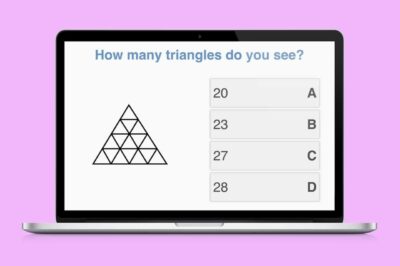
Know how the entire class is feeling, not just the most vocal. Gauge comprehension quickly and easily without putting anyone on the spot. (Image from Poll Everywhere)
Tools like Kahoot or Poll Everywhere gather information on learners’ interests, embed opportunities for learner agency and advocacy into the learning experience, all while keeping the experience enjoyable. One of the keynote speakers at the ISTE 2022 conference, Zach King, discussed the benefits of leaning into learner interest and the impact it can have on a learner’s outlook on opportunity. Now, as a successful Youtube videographer, filmmaker and graphic illusionist, he shared that the first true milestone of his career were his first few assignments: making movies for his younger siblings, as his teachers allowed him to submit scripts and movies instead of traditional essays. His anecdote demonstrates how technology can be used as a vehicle to connect the dots between student interest, relevance, rigor, and community.
Explore how some schools are pushing the boundaries toward real-world learning experiences in the blog post, When Learning is Authentic.
3. Promote peer collaboration
 With technology, students have the ability to connect with peers locally, nationally, and globally. Encouraging students to use platforms like Google Meet, Zoom meeting rooms, or Padlet simultaneously encourages peer discourse, dialogue, and constructive collaboration. Tools like “Be Internet Awesome”, a Google application, teaches learners how to use technology in a way that’s safe, secure, promotes productive dialogue, and encourages the use of technology as a tool for continuous, self-directed learning. Through these tools, we’re able to see how technology has the ability to provide additional ways for learners to exercise their voice individually, with their peers, and with their educators.
With technology, students have the ability to connect with peers locally, nationally, and globally. Encouraging students to use platforms like Google Meet, Zoom meeting rooms, or Padlet simultaneously encourages peer discourse, dialogue, and constructive collaboration. Tools like “Be Internet Awesome”, a Google application, teaches learners how to use technology in a way that’s safe, secure, promotes productive dialogue, and encourages the use of technology as a tool for continuous, self-directed learning. Through these tools, we’re able to see how technology has the ability to provide additional ways for learners to exercise their voice individually, with their peers, and with their educators.
4. Leverage data to inform instruction
An intentionally designed digital ecosystem enables educators and learners to gather data and document learning in real-time in ways that make it actionable and inform next steps.
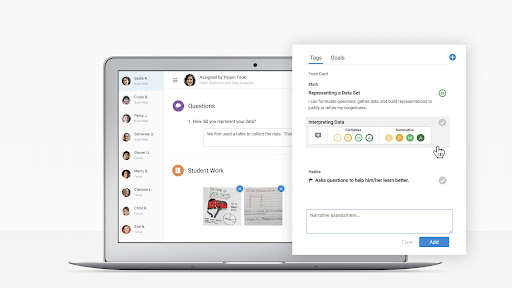
Using the Assessment tool in the Altitude Learning platform, educators and learners can see progress toward competencies and share feedback across academic and social-emotional learning in a way that’s meaningful, efficient, and actionable.
Tools like the Altitude Learning platform and Schoology help learners hone their critical thinking skills and take the lead in advocating for their own learning experiences. With every click, these resources support learners in setting goals, documenting their progress, and analyzing their instructional data. By reviewing their own data, often alongside an educator or their peers, learners are able to identify instructional trends, and use that data to inform their next steps.
As resources continue to get better at supporting a learner-centered approach by keeping learners’ interests at the center of their learning experience, we have to be diligent in continuing to identify the best resources for our learners. Whether it’s to build relationships in your classroom, create connections within the community, or to better meet whole-learner outcomes, using technology-enhanced tools to build a digital ecosystem supports learners and encourages learner agency and efficacy.
Learn more about how we can help your team build a learner-centered digital ecosystem that elevates student voice and facilitates powerful teaching and learning opportunities. Connect with us by emailing collaborate@learnercentered.org.

